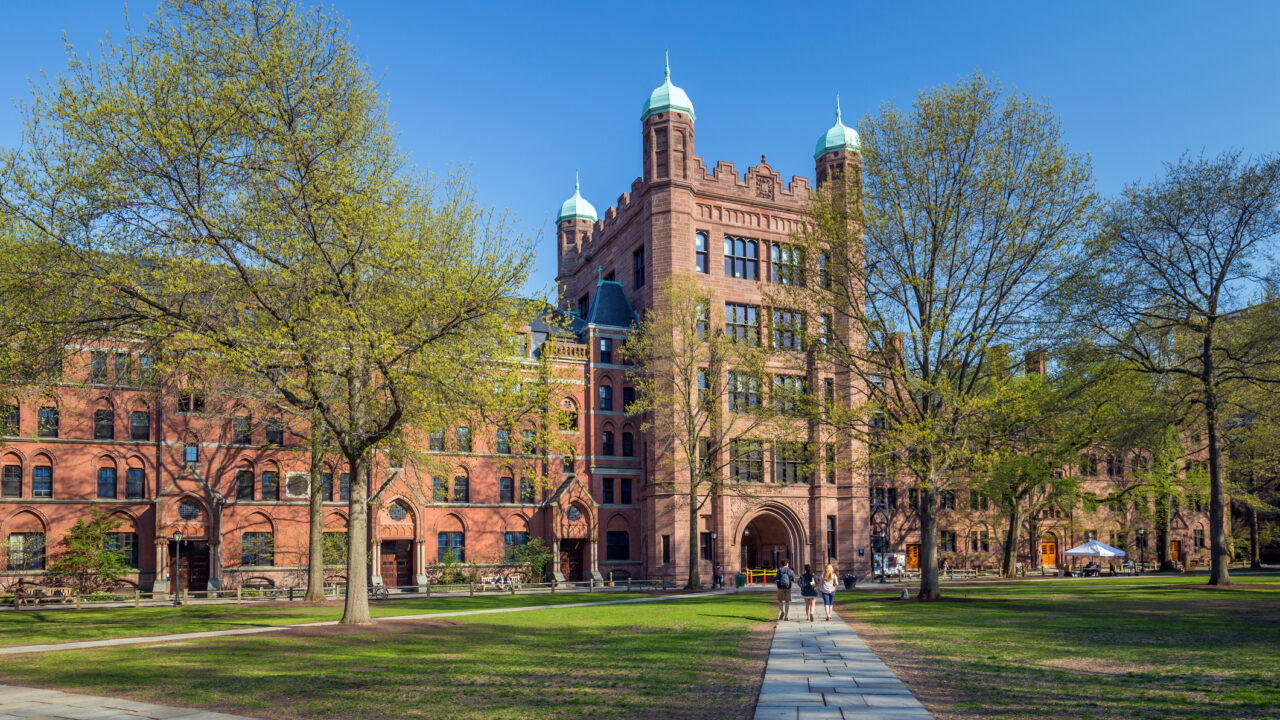Learn how Citizens UK borrowed from Chicago organizers to transform Universities into catalysts for community power.
“In terms of people, money and relationships, universities are by far [one of] the powerful pillars of civil society – but too often they are just another inaccessible building for local people.”
– James Asfa, Organizer with Citizens UK
In 1939, a young sociologist named Saul Alinsky worked with residents in the neighborhoods surrounding Chicago’s meatpacking plants to build a new type of “people’s organization.” They called this first group The Back of the Yards Neighborhood Council (BYNC). In a community sharply divided between Polish, Lithuanian, Slovak, Bohemian, German, Irish, and Mexican residents, BYNC became the first to successfully unite these neighborhoods into a single powerful constituency.
Where unions and political parties had tried and failed to do exactly this for years, Alinsky’s model succeeded because it worked through the few neighborhood institutions that people already held in common. In an area that was 90% Catholic, the most important of these was the Church Parish.
The strategy worked. Over 100 of the neighborhood’s major associations (many church-based) pledged their support in the organization’s founding assembly. Confronted for the first time by the united people of Back of the Yards, meatpacking companies were forced to negotiate. Within days of the organization’s founding, neighborhood residents won their very first union contract, and local banks quickly caved to pressure demanding residents be able to access funds for mortgages and building upgrades.
Building on this success in Chicago, Alinsky would go on to build similar “people’s organizations” across the country using the same method and model. Organizations like BYNC eventually became the first chapters of the Industrial Areas Foundation (IAF) –– the oldest and largest community organizing network in the US today.
Now, over eight decades later, faith-based institutions (churches, synagogues, and mosques) are still the glue that holds many communities together as “linking institutions” that help bring individuals out of isolation to build relationships and so serve as a powerful foundation for collective action. As a result, they remain at the heart of the community organizing tradition today alongside other traditional institutions such as unions, neighborhood associations, and schools.
But as these foundational civic institutions see an increasing decline in membership and participation, community organizing must also innovate to build power through new means.
Remarkable work being done by organizers with Citizens UK (the largest organizing network in the United Kingdom and sister organization of the IAF) shines a light on one potential option: colleges and universities. Their work shows that just as the Catholic Church was at the center of the Back of the Yards neighborhood in the 1940s, today, universities have the potential to represent a crucial new institution for building community power.
Like the faith-based institutions, universities present such a fertile ground for broad-based organizing because, as an ideal linking institution, they: 1) provide the space for people to interact face to face and build relationships across difference, 2) carry an institutional strength built on sustainable funding, organizational structure, and existing membership, and 3) connect people with sources of meaning and value based on working towards the public good while also serving as a vehicle to act out those values on a day-to-day basis.
To be sure, many other civic institutions display some combination of these characteristics. But few beyond those already engaged by community organizers fully embody all three as much as universities, while also representing so much latent power. For example, while neighborhood knitting groups or community book clubs may serve to link people together, they do not have the institutional strength to mobilize effectively over the long term. On the other hand, organizations like sports leagues can provide relationships and often institutional strength but don’t always have the value-based missions that enable them to undertake and endure extended organizing campaigns.
2000 Citizens UK leaders meet with political candidates at a national assembly ahead of the 2024 General Election.
This is not to say that these organizations do not and have not formed valuable members of broad-based organizations in the past –– only that universities show the most promise among many that are currently under-engaged.
King’s College London has been at the forefront of this work with Citizens UK for the last decade. Responding to the issues they saw affecting families in the neighborhoods around their campus, leaders at King’s College and several other local community institutions began working with organizers from Citizens UK to bring together working-class parents from local boroughs of Lambeth and Southwark.
Rather than develop a set of programs that they predicted would be useful to struggling families, staff at King’s College called on community organizers to help them ask parents what they needed. Despite representing an extremely diverse population, parents overwhelmingly agreed that they wanted to break down two of the main barriers that still kept their children from attending university: the cost and quality of private tutoring (which is seen as a necessity for attending good universities) and the huge application fees for British Citizenship.
Soon, this parents’ group had pulled in other members of the community that were connected to King’s College and built a campaign that both successfully reduced the citizenship application fee for children and created an interest-free loan program so that parents could avoid taking out risky debt to finance applications.
Because tutoring programs already existed in the university for community members, parents formed their own organization, “Parent Power,” dedicated to training more families in how to access these resources (which itself became a member institution of Citizens UK). In 2019, this organization received national recognition by winning the Guardian’s Social and Community Impact Award.
Like the Catholic churches in the Back of the Yards neighborhood, Kings College brought together a large group of individuals with diverse life experiences and linked them together in a community that gave them the ability to act collectively through a shared institution.
Meanwhile, two and a half hours north of London in the city of Birmingham, student, faculty, and administrative leaders of Citizens UK at Newman University held their own campaign to identify the pressures facing the Newmanites. As a smaller, public university that fills a similar role to Community Colleges in the US, Newman serves a large number of ‘non-traditional students’, many of whom return to school for a career change or training in a specific vocation and already have families of their own.
As their community-wide listening campaign gained momentum, story after story was shared about the lack of mental healthcare for older teens. It was an issue that was quickly corroborated by the other community institutions that were a part of the Citizens UK chapter in Birmingham.
Mobilizing quickly in partnership with those other member institutions, Newman leaders began meeting with local healthcare practitioners to find out why, soon discovering that 16 and 17-year-olds fell into a service gap for local healthcare providers. Working with the entire Citizens UK network, Newman leaders helped organize a city-wide campaign that resulted in the successful establishment of an astonishing array of new mental health services, impacting approximately 4,000 young people in Birmingham.
Newman and King’s College are not anomalies. In 2022, Citizens UK’s local organization in Cardiff, Wales, won pay raises for thousands of low-paid workers across the city, with Cardiff University students, faculty, and staff playing key roles. In 2019, University College London was at the heart of a campaign organizing high-school students, teachers, and parents to ensure that kids could no longer be denied free school meals because of their parents’ immigration status –– a game changer for tens of thousands of children across the country.
Stories like these demonstrate not only that it is possible for universities to have a positive impact on the communities they are anchored in –– that can be and is done in many ways –– but that universities can work in partnership with other vital civic institutions as part of a broad-based civic alliance to do so.
In 2023, for the first time, Citizens UK brought together Student Government leaders from across the country to learn about community organizing and strategize how to take it forward on their campuses in years to come.
This is distinct from two ways in which universities frequently engage with community concerns: acting either unilaterally or peripherally.
Because of their size, universities often can take unilateral action on a campaign by themselves and tend to focus on what the university can offer. Universities are large enough to influence a local issue by sourcing more goods locally, raising wages, and improving environmental commitments all on their own. Community members are generally called in to participate in this process, but as “the convener,” the university decides what’s on the agenda and what to ultimately proceed with.
On the other end of the spectrum, universities are also frequently engaged in community issues indirectly or peripherally through student activism. In these situations, students form solidarity groups (often providing much needed support and visibility), but the university as an institution remains untapped and unengaged. While this can lead to influential wins, it is not aimed at building long-term power that will last beyond individual campaigns.
In both situations, both the university and the broader community lose out on a much deeper relationship that could have transformative potential to organize for broader changes. By sharing power with other community leaders to pressure local officials, corporations, and other institutions, schools like King’s College, Newman University, Cardiff University, and others have been able to take on deep-set issues in the community that they would never have been able to begin addressing on their own.
In the United States, groups like Bargaining for the Common Good are experimenting with similar ideas by bringing together higher-education institutions with unions, community groups, and racial justice organizations. However, their focus is still on working with student groups rather than mobilizing the institution as a whole, leaving substantial power on the table.
This is the needle that Citizens UK has managed to thread by getting universities to become invested as an institution while recognizing that it cannot solve the problem alone. At the heart of this balancing act has been their ability to help university and community leaders realize their shared self-interest. In none of the cases above was the university acting solely ‘on behalf of’ the community, nor was it the main convener. Rather, it was one of numerous stakeholders that held a shared interest around a common goal.
Today, Citizens UK counts 17 universities among its hundreds of member institutions. Just like the rest of these members –– be they congregations, childcare centers, non-profits, unions, or any number of other community groups –– these 17 universities pay dues to the organization and send delegates to organization-wide meetings across the country.
While integrating universities like this is promising, challenges still exist, especially when it comes to maintaining the balance of power in a broad-based organization between such large institutions and others that may only have 100 members or less. It takes constant attention and a lot of organizer time to ensure such universities remain engaged while not overshadowing others. But so far, organizers at Citizens UK say the benefits outweigh the risks.
Alinsky first organized around Catholic parishes in the Back of the Yards because those were the institutions that linked people together. The stories and success coming out of King’s College, Newman University, Cardiff University, University College London, and many others suggest that institutions of higher education are today filling a similar role. At a time when many of the traditional institutions that community organizing has relied on are shrinking, people’s organizations face the challenge of how to maintain enough power to stay at the negotiating table. The innovative work of organizers in the UK has shown that learning to work with universities could be one way to adapt.

